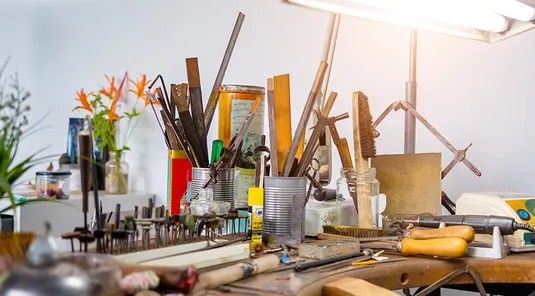Shop Now
- Warburtons Tool Kits
- 3D Jewellery CAD Software
- Benches, Tools & Accessories
- Books, DVDs & Templates
- Burs & Drills
- Casting & Melting
- Chains
- Cleaning
- Display
- Dust Extraction & Air Filtration
- FINDINGS - PEEKAYS
- Flex Shafts & Micromotors
- Forming
- Gemmological
- Gemstones
- Gift Voucher - Warburtons
- Jewellery Bead & Pearl
- Lapidary
- Lighting & Photography
- Magnifiers
- Mass Finishing
- Measuring: Gauges & Scales
- Metal: Sheet, Wire, Tube, Testing
- Microscopes
- Permanent Jewellery
- Plating, Colouring & Patinas
- Polishing & Abrasives
-
Presentation Packaging
- Carry Bags
- Carry Bags - Custom
- Deluxe Boxes
- Economy Jewellery Boxes
- Flock Boxes
- Imitation Leather
- Jewellery Pouches
-
Leatherette Jewellery Boxes
- Cufflink Box
- Gold Corner Earring Box
- Gold Corner Pendant Box
- Gold Corner Ring Box
- Gold Line Earring Box
- Gold Line Necklace Box
- Gold Line Pendant Box
- Gold Line Ring Box
- Leatherette Bangle Box
- Leatherette Bracelet Box
- Leatherette Double Ring Box
- Leatherette Earring Box
- Leatherette Long Bracelet Box
- Leatherette Multi Box
- Leatherette Necklace Box
- Leatherette Pendant Box
- Leatherette Ring Box
- Silver Corner Earring Box
- Silver Corner Pendant Box
- Silver Corner Ring Box
- Plastic Bags & Shipping Boxes
- Repair Envelopes
- Ribbon
- Supplementary Parts
- Wood Jewellery Boxes
- Clearance
- Safety
- Sandblasting
- Setting & Engraving
- Soldering & Welding
- Watchmakers
Mastering Wire Wrapping: Tips and Tricks for Stunning Jewellery
Mastering Wire Wrapping: Tips and Tricks for Stunning Jewellery
If you’re drawn to detail and love jewellery that tells a story, filigree might be your new favourite technique. This age-old wirework method transforms precious metals into lace-like patterns that captivate the eye and showcase your craftsmanship.
In this post, we’ll explore what filigree is, the tools you need to get started, and how to begin mastering this beautiful technique with supplies from Warburtons.
What is Filigree in Jewellery Making?
Filigree is a decorative jewellery technique where fine threads of precious metal—usually gold or silver—are twisted, curled, and soldered into intricate designs. Think delicate spirals, flowing scrolls, and lace-inspired patterns that sit within a frame or base.
With a history stretching back to ancient Mesopotamia, filigree has been used in everything from Indian bridal jewellery to Georgian brooches. Today, it remains a favourite among jewellers for its elegance and handcrafted charm.
Essential Tools for Filigree Success
Like any detailed work, having the right setup is half the battle. Here’s a beginner-friendly toolkit to kickstart your filigree journey:
- Gold & Silver Wire – Choose from a variety of gauges in our Gold Sheet & Wire collection. Sterling silver wire is ideal for learning and experimenting affordably.
- Jewellery Pliers – For fine wire shaping, grab round nose, flat nose, and chain nose pliers to bend wire with precision.
- Soldering Tools – Use a micro torch or full soldering station to carefully fuse wirework.
- Benches, Pegs & Lighting – Stay steady with a bench peg, magnifying lamp, or adjustable bench light for close-up detail.
- Flux and Solder – Use easy-flow solder and flux paste to make clean joins between filigree elements.
- Pickle Solutions & Cleaning Tools – Finish your piece with pickle pots and jewellery polishers to give your design a pro finish.
Try This: Simple Filigree Earring Design
Ready to put your skills to the test? Follow these steps to make your first filigree earring:
- Cut 0.4mm–0.5mm silver wire into short lengths.
- Use round nose pliers to curl into spirals or scrolls.
- Arrange your design within a small metal frame or on a silver base plate.
- Carefully flux and solder each connection.
- File and polish using abrasive tools for a smooth, bright finish.
Tip: Practice with copper wire before working with silver or gold to refine your skills affordably.
Why NZ Jewellers Love Filigree
New Zealand jewellers take pride in their craftsmanship, and filigree is a timeless technique that showcases true artistry. Whether you're working on custom bridal pieces or selling at local markets, filigree brings a refined, handcrafted touch to every design.
At Warburtons, we make it easy to get the tools and supplies you need, shipping across New Zealand!
FAQ
Q: Is filigree suitable for beginners?
A: Yes! With basic wire and pliers, you can start simple and build your skills over time.
Q: What’s the best wire size for filigree?
A: 0.4mm–0.5mm silver wire offers a great balance of strength and flexibility.
Q: Can I combine filigree with other techniques?
A: Absolutely! Filigree pairs beautifully with stone setting, enamelling, or even resin casting.
Fast Shipping, Trusted Tools
At Warburtons, we support jewellers of all experience levels with reliable tools and quality materials at competitive prices. Whether you're in Auckland, Christchurch, or a small regional town, your next jewellery project is just a delivery away.
Final Thoughts: Beauty in the Details
Filigree isn’t just a technique—it’s a meditative, rewarding art form. With the right tools, a little patience, and inspiration, you’ll soon be weaving wire into elegant, timeless jewellery.
Explore our full range to bring your next idea to life.




